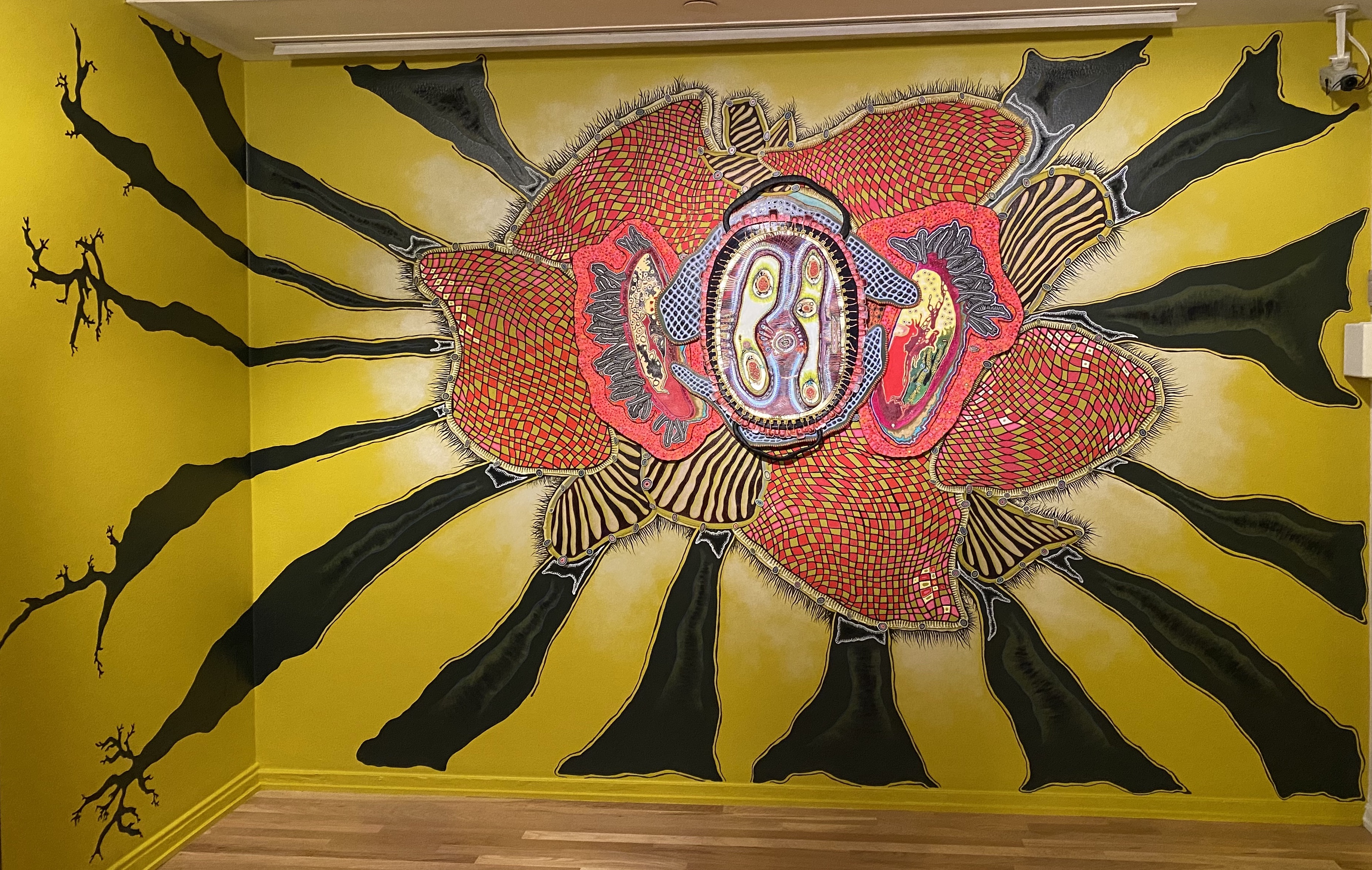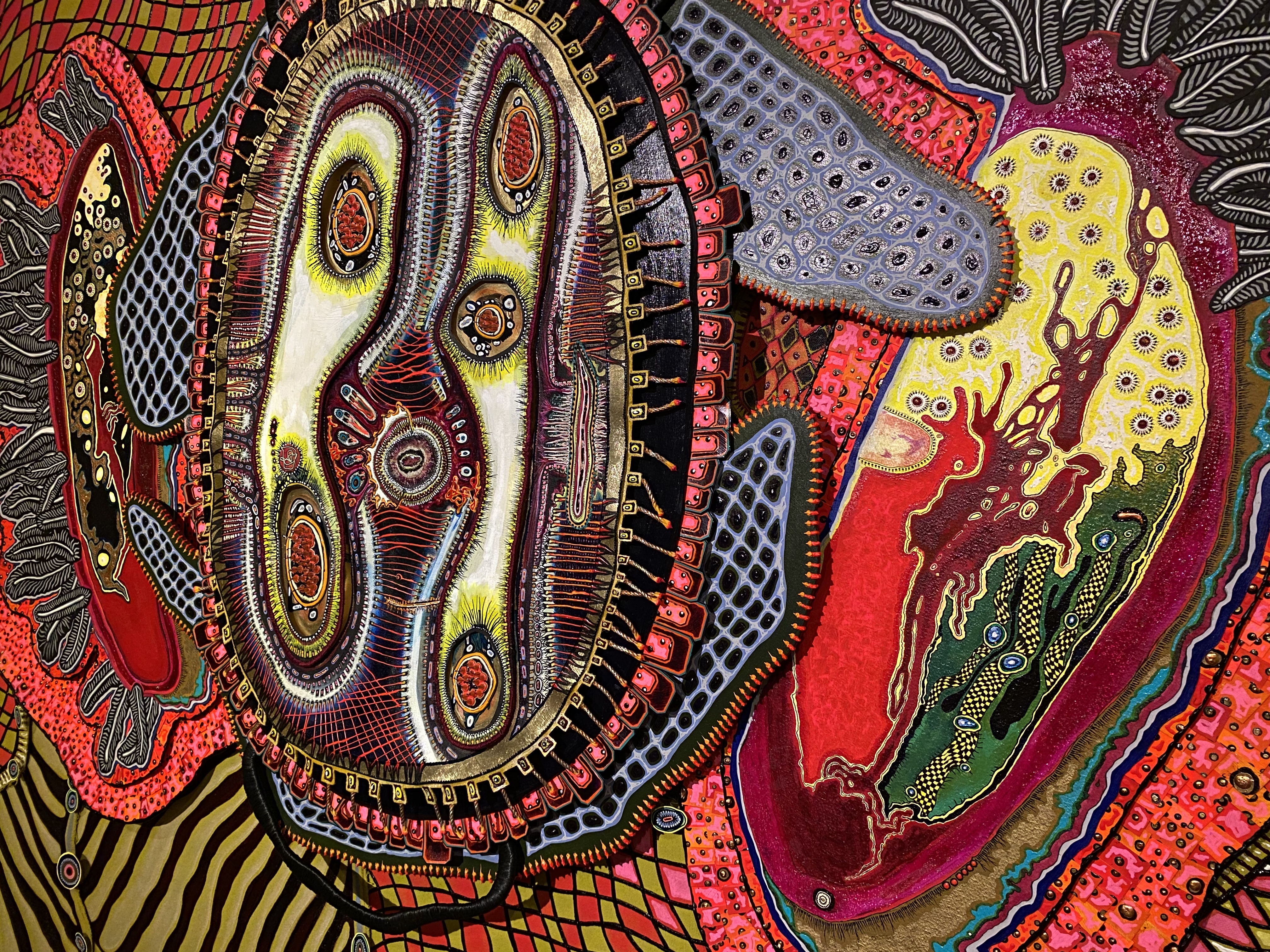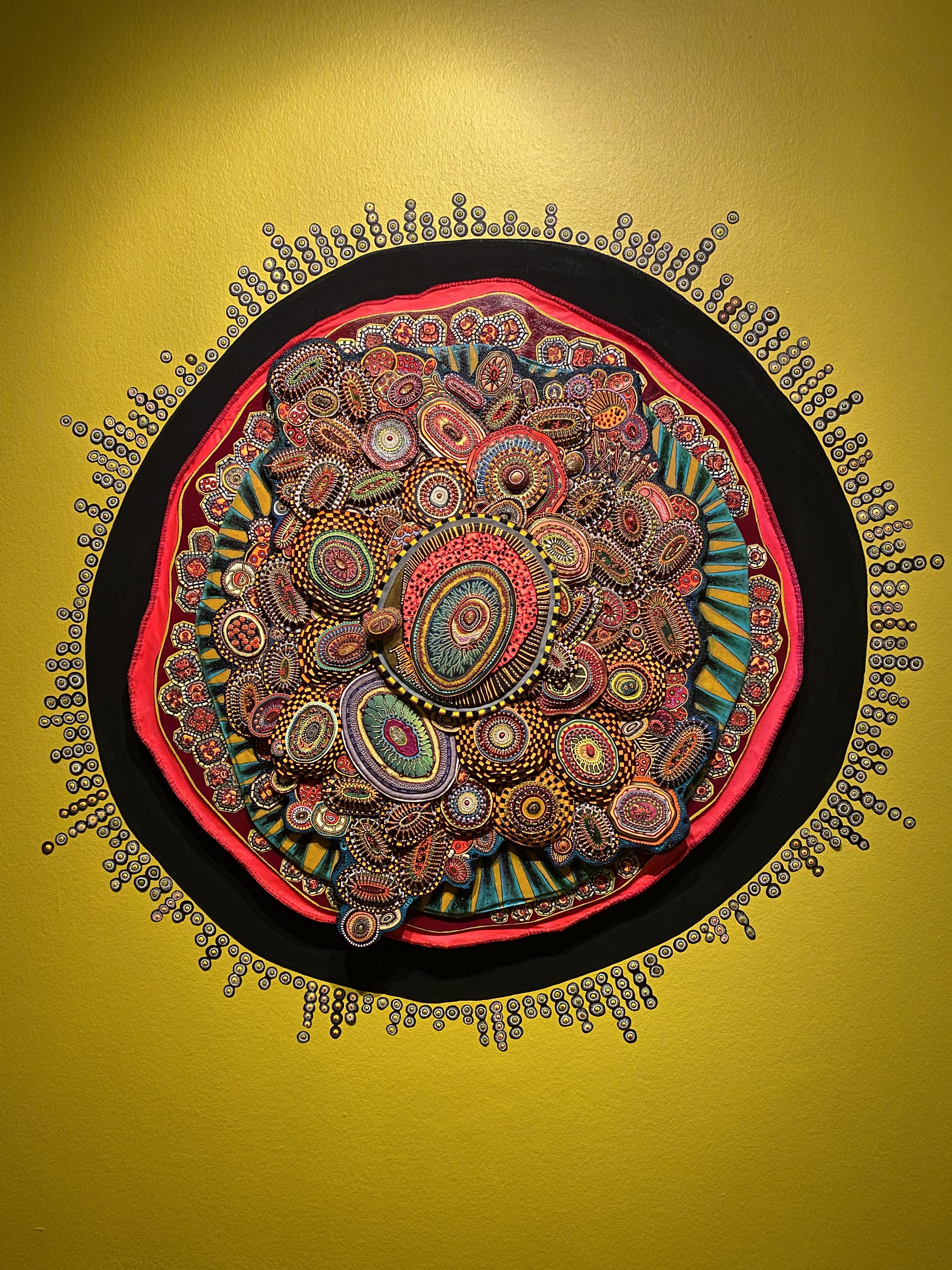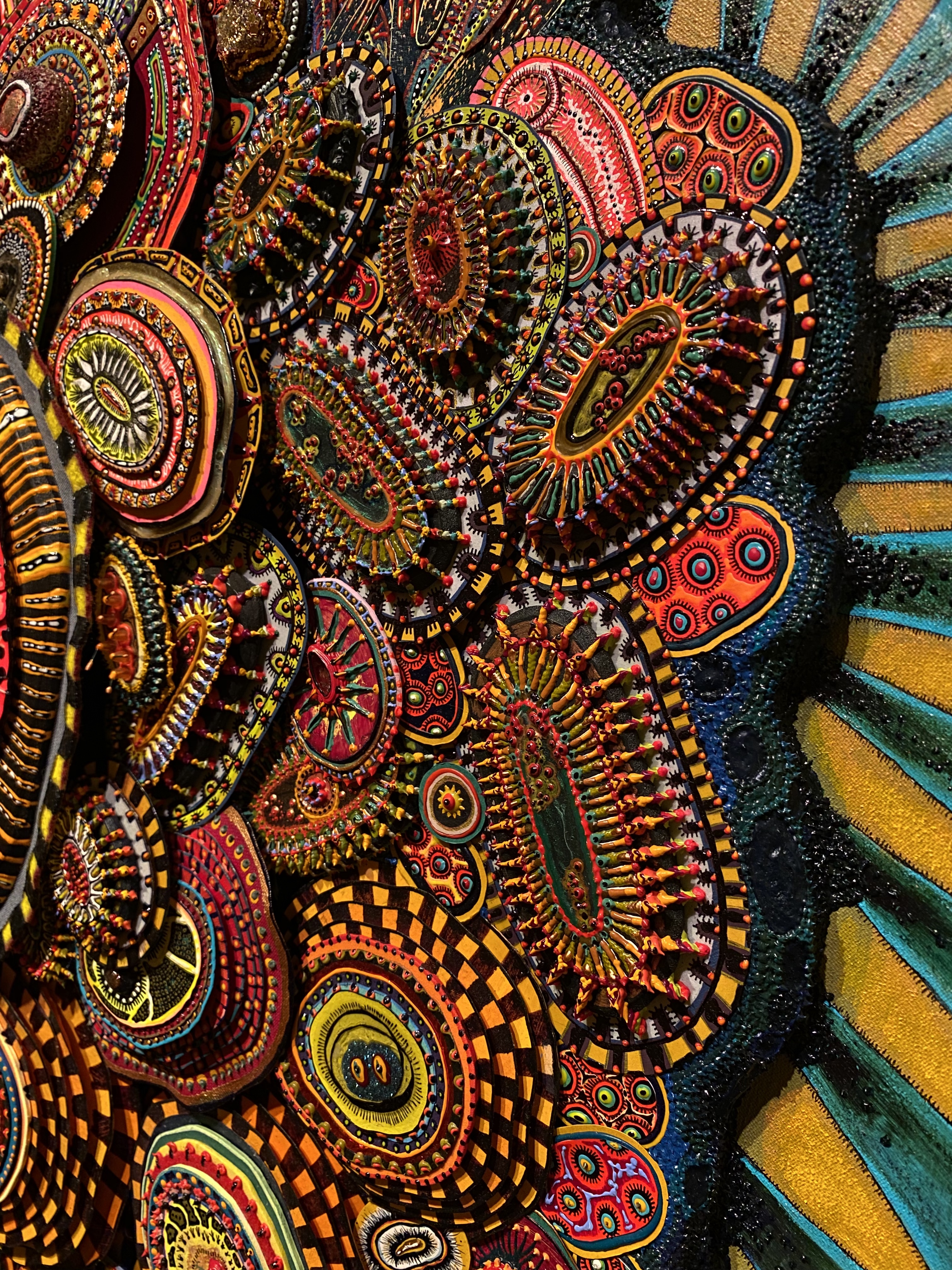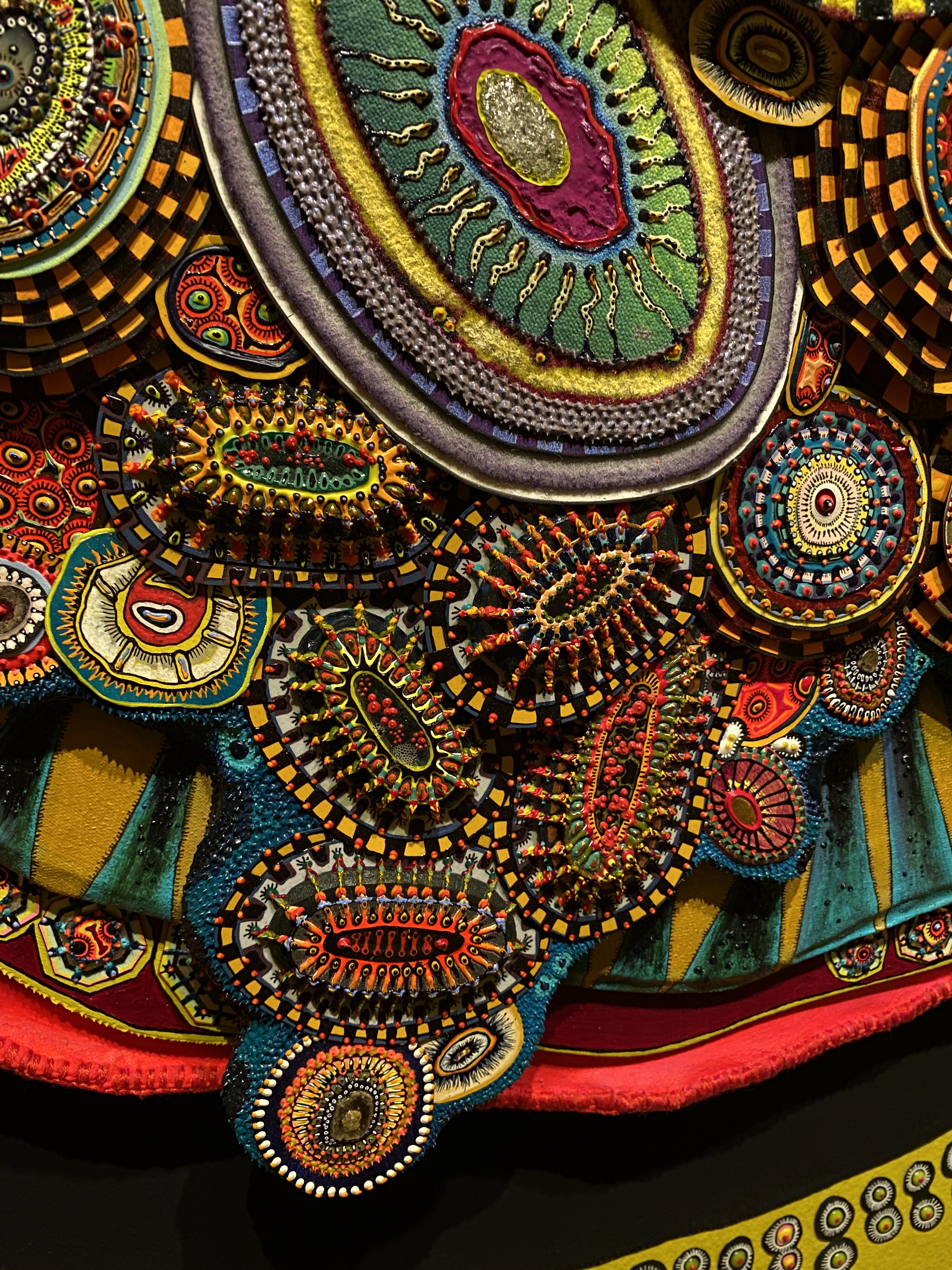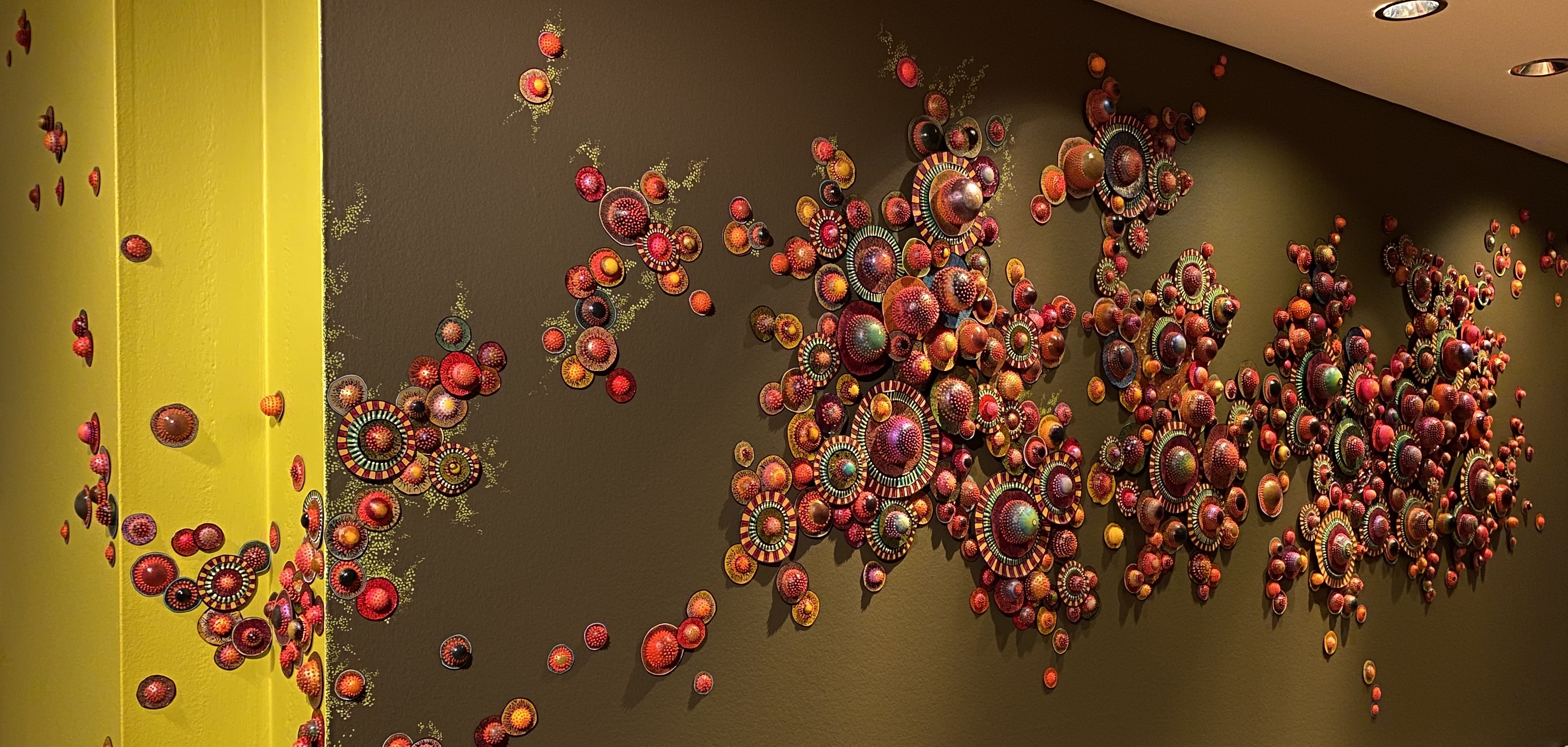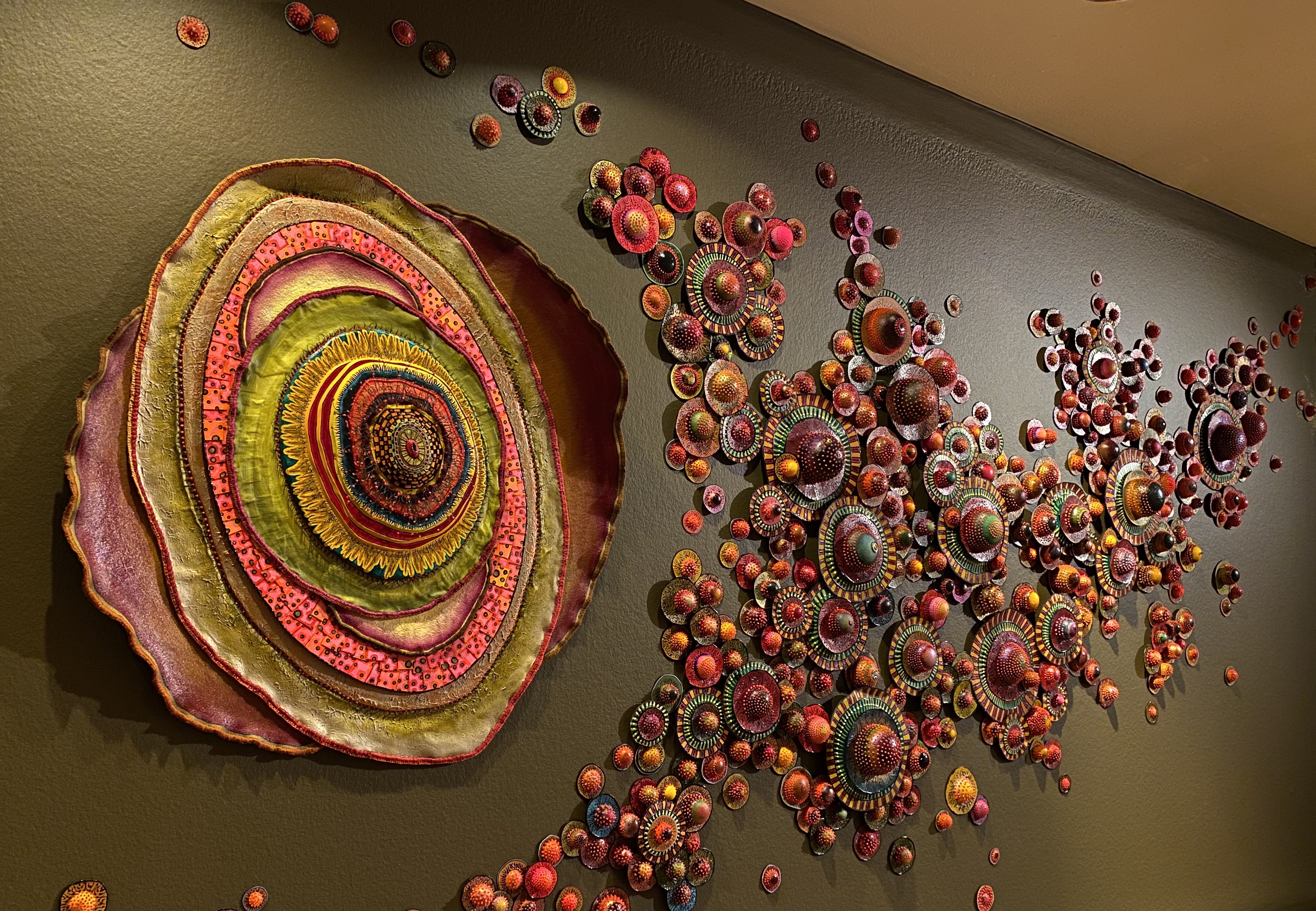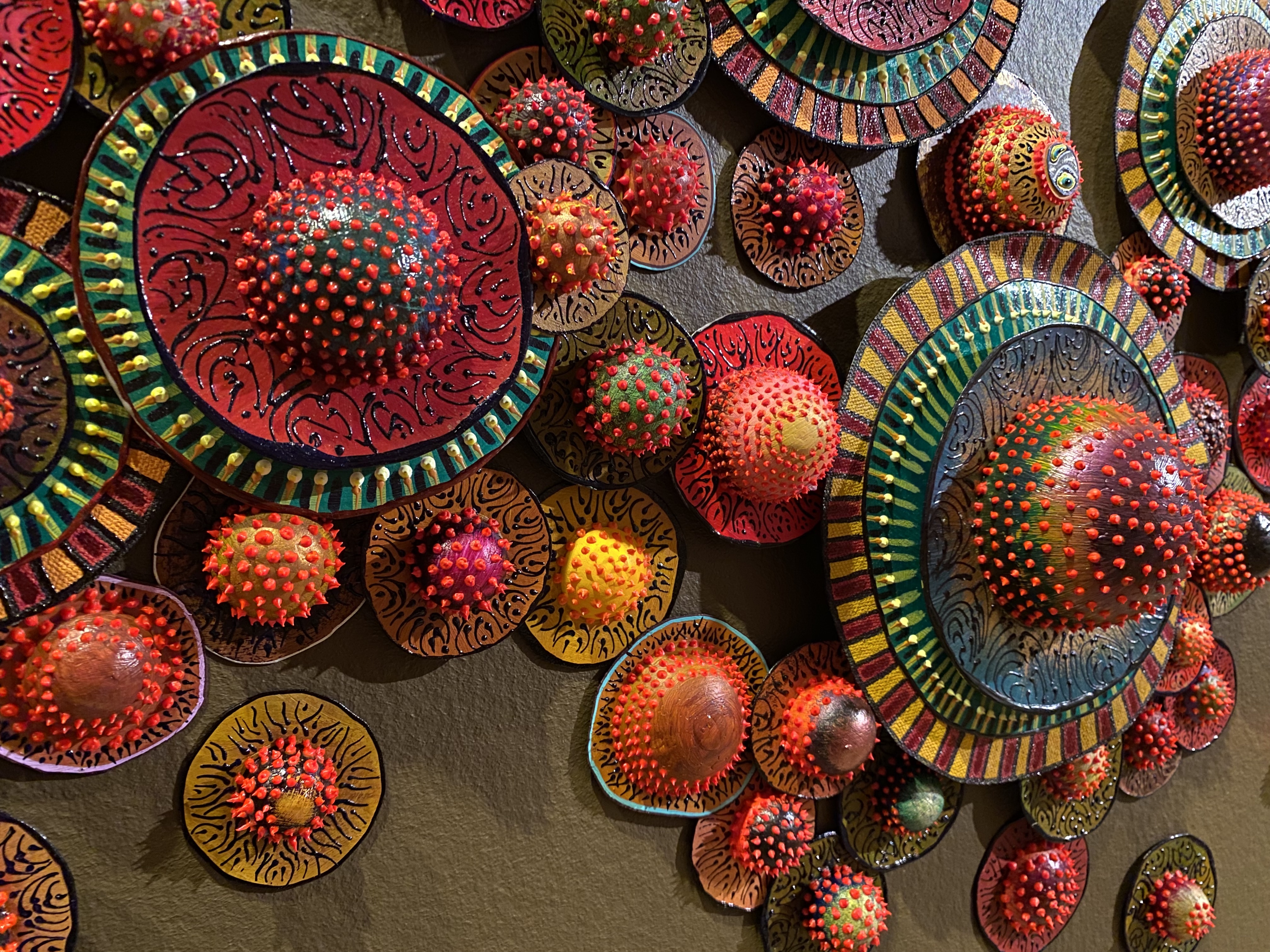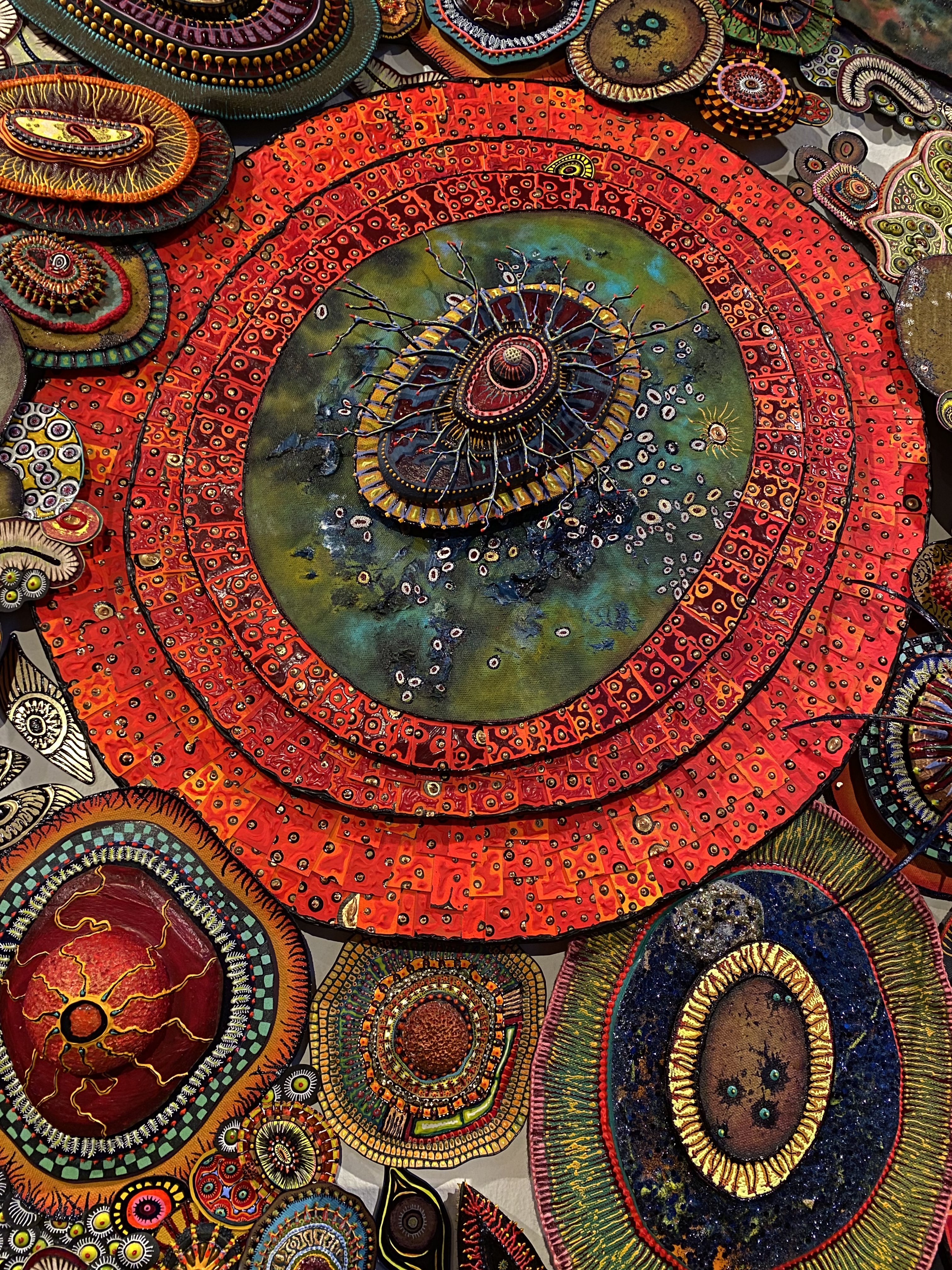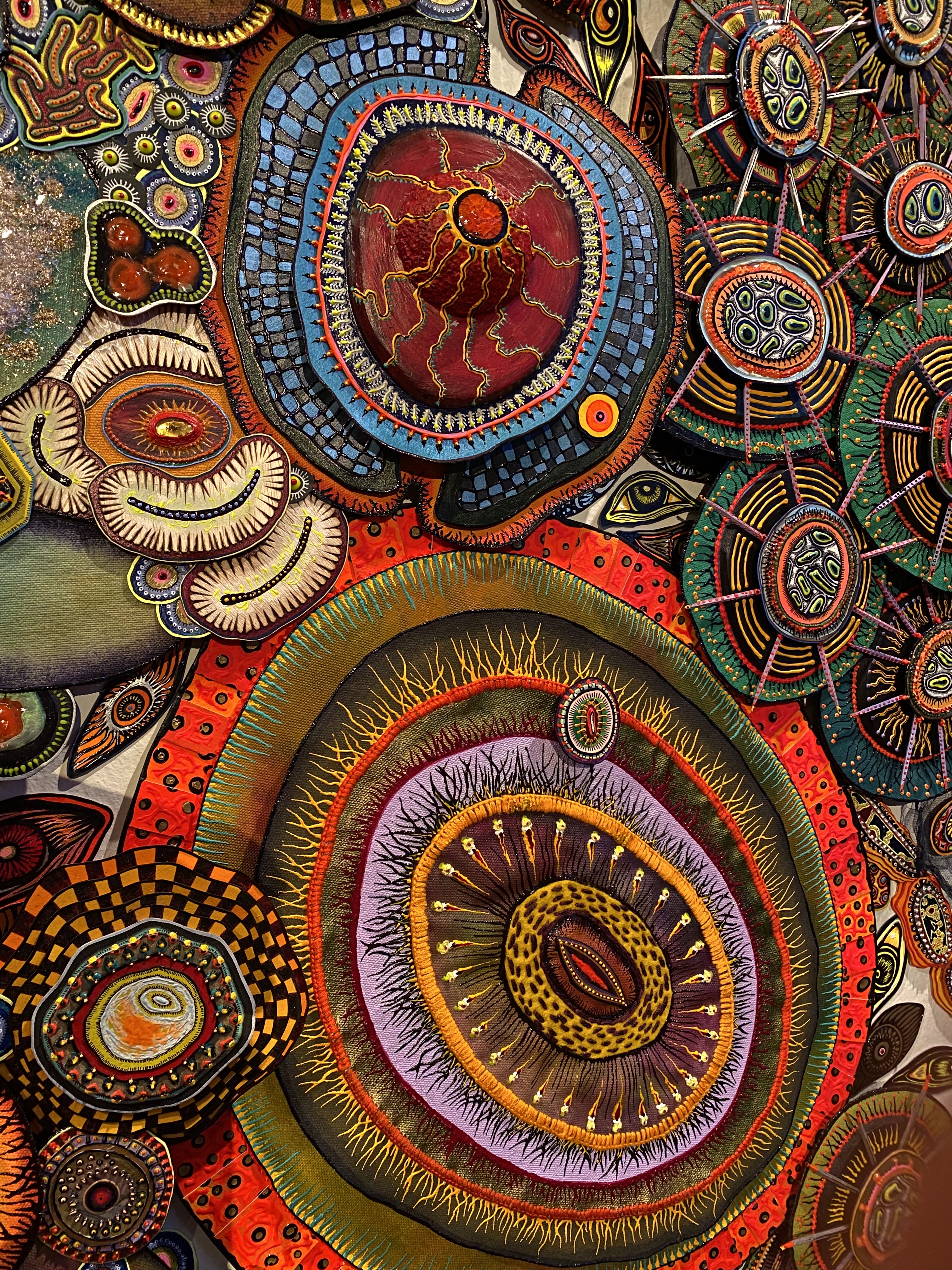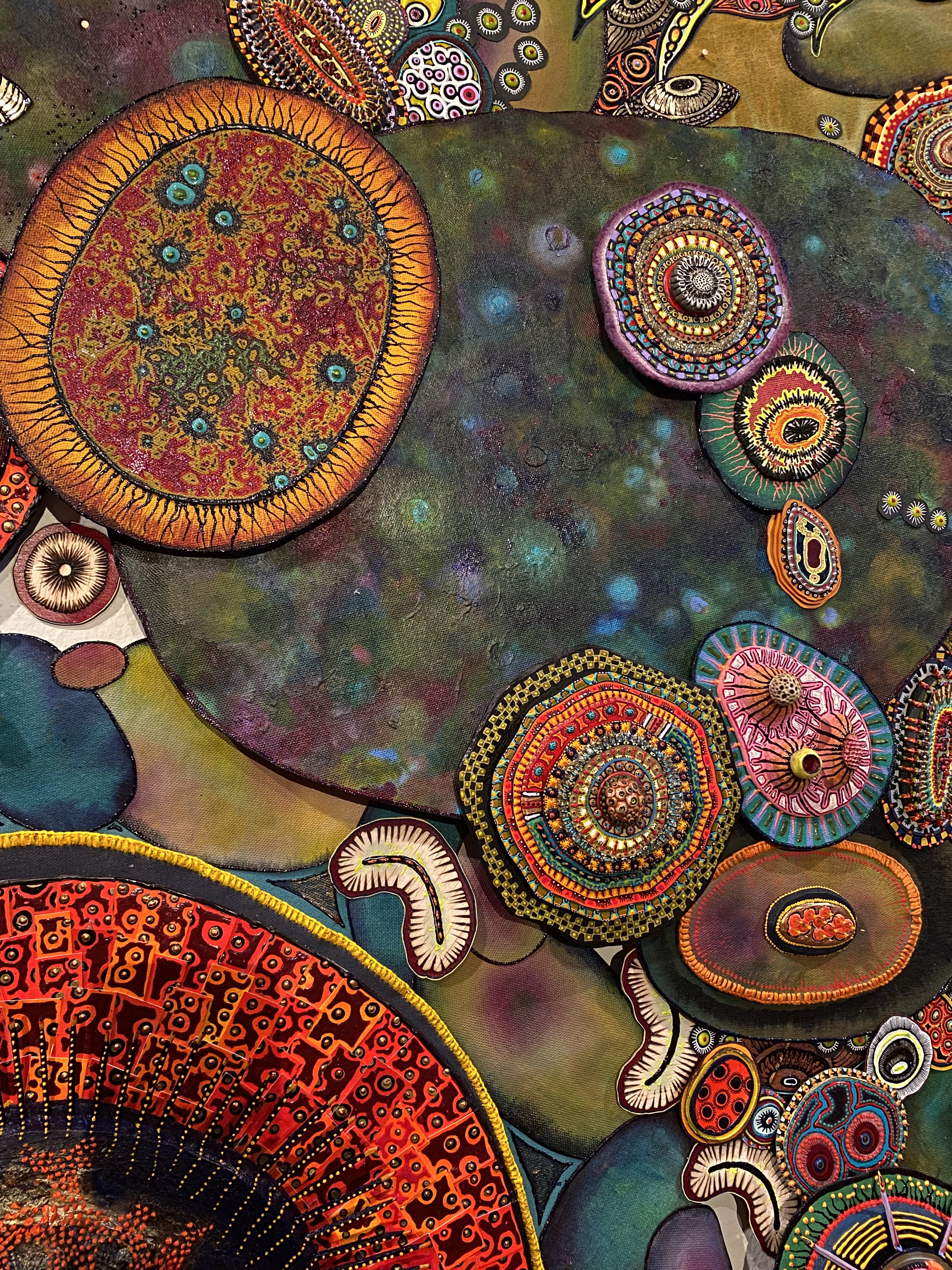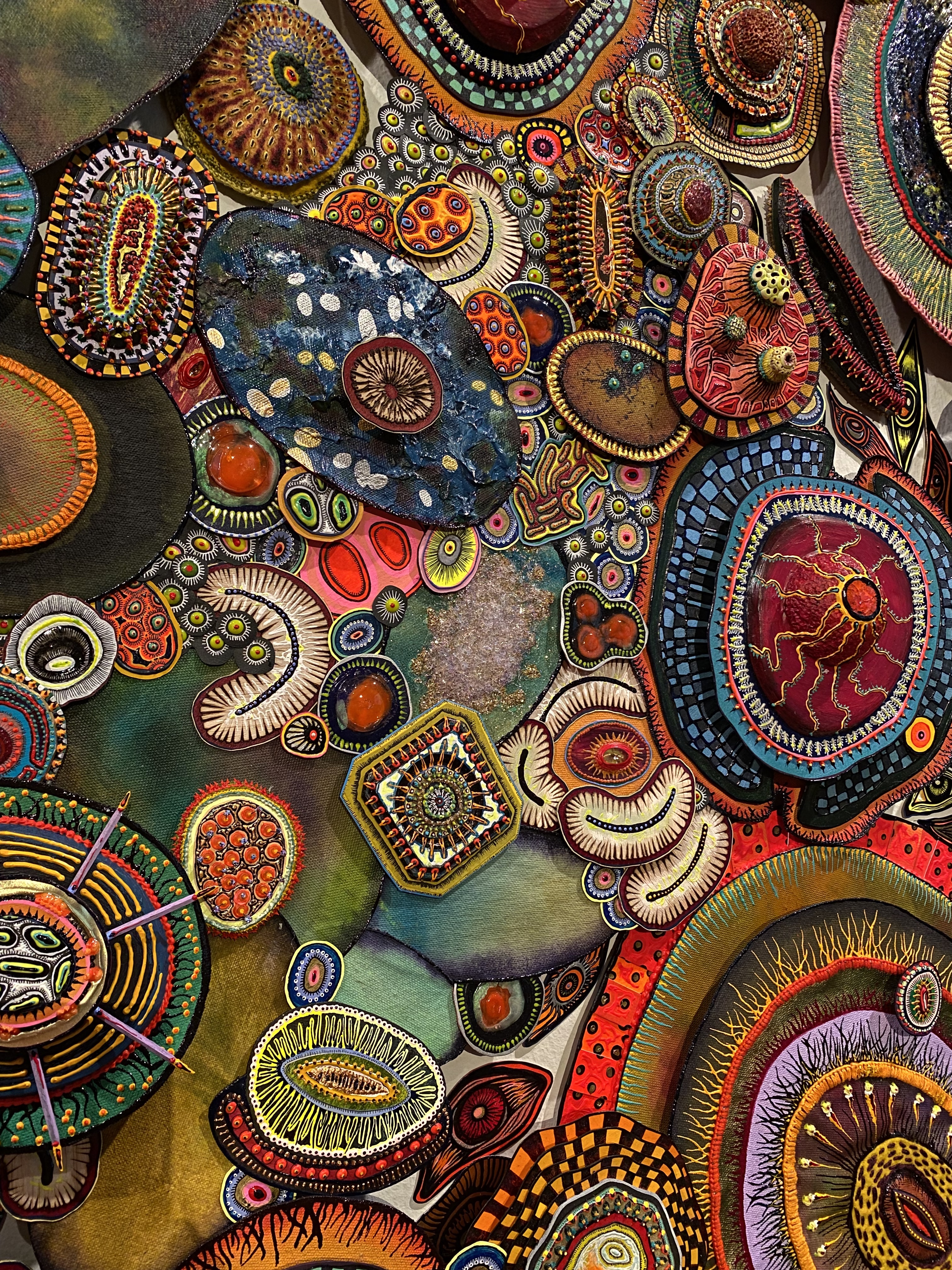Amie Esslinger (American, b. 1984)
But we knew that something was wrong, that the world was wrong (catastrophically), that we were wrong (catastrophically), that something (anything) was catastrophically wrong everywhere. We were sick in a gloss of total health, and totally healthy in a sickening world. We were lonely, but unable to form the bonds necessary to end our loneliness. We were overworked, but intoxicated by our own working. I thought I had become sick (in a manner), that I was unwell (in the spirit), that I was collapsing in a fit of Faustianism in a devil’s bargain world.
–Anne Boyer, The Undying1
It is often difficult to process the effects of corruption, displacement, and human rights violations that occur in faraway countries. In 2020, however, the culmination of these abuses emerged in the form of a global pandemic. We know that global man-made deforestation that displaces animals leads to a prevalence of viruses not previously encountered. New strains and variations of circulating viruses are continuously being spread across the globe, but if the factors of high transmissibility and high mortality coexist, as we have seen with COVID-19, it can lead to a global pandemic that brings the world to a standstill. When environmental devastation causes an outbreak, public health experts have protocols for controlling the spread. Where factors such as governmental corruption, human displacement, and the politicization of public health are introduced, a monster is unleashed. We understand viruses can make us sick, or even kill us, but the virus itself is not the most monstrous aspect of the COVID-19 pandemic. Rather, it has been the human response to it.
This is where Amie Esslinger’s haunting biological forms take over. Viruses infiltrate the body and use our systems for their own benefit, which is horrifying because of how destructive these opportunists can be, and because the invasion happens without our knowing it, until it is too late. This is why the pandemic we are living through at the time of writing, in late 2021, is by its very nature monstrous.
Ultimately, the conversation around environmental destruction today cannot be examined through just one lens—through the loss of a species’s habitat, polluted water, or corporate greed—because all aspects are interconnected, tied to our very existence. Esslinger’s forms, reduced to basic artistic elements, draw out these entanglements, but she also offers a model for questioning the interrelationships of these seemingly isolated incidents (the loss of a habitat, or a body of water polluted): “I research images of diatoms, viruses, bacteria, cells, parasites. I sift out the shapes, colors, and functions that I find visually compelling and dramatic. To me, these images resemble growth and carnage, endless complexity. I use scale to enlarge these microscopic worlds, building quixotic creatures and battlegrounds that are tethered to the reality of our physical world."2 When you enlarge the microscopic world it becomes intoxicating and disorienting, a space often occupied by the sublime—the space that makes one feel fully alive and question their very existence.
The concept of the sublime enters the art historical discourse in Edmund Burke’s 1757 treatise A Philosophical Enquiry into the Origin of Our Ideas of the Sublime and Beautiful, in which terror serves as the basis for the sublime: “the strongest emotion which the mind is capable of feeling."3 The sublime is the moment you step off the precipice but before you begin to fall; a moment in which your fate has been decided, but before you are able to fully understand the consequences. This can be exhilarating and terrifying; beautiful and grotesque; limitless and isolating; knowable and unknowable. Above all, the sublime is a moment that cannot be undone, in which one’s balance is destabilized. For a cell, the moment in which it divides into two is a moment that cannot be undone, but its effects are yet to be determined. Of course, the sublime is about a metaphysical transformation that moves one’s consciousness away from the plane of mere mortality.
Esslinger examines the aesthetics of microbiology in virus-like installations in which the disease co-opts the normal processes of cell reproduction. Duplication is a critical function of life: it is how an embryo develops into a fetus and then into a baby, also how viruses make us sick, or cancer metastasizes. These forms, which feel so familiar in our own circulatory system and cells, transform from beautiful and life-affirming into something that borders on monstrous and terrifying in a large-scale installation that envelops us. Anne Boyer writes in The Undying, “The sonogram that can find a new life in a person’s womb can also find an embryonic death there."4 Cellular processes are contained so neatly within our bodies that their disruption feels invasive, even horrific. Esslinger is drawing a version of biology that supersedes that which is actually discoverable in the human body; likewise monsters are something uncontrollable that have mutated away from the human. Esslinger’s striking multimedia compositions elicit the sense that the virus is natural and of us, and simultaneously a creature that can take over and destroy the human race. This makes her installation an effective visual interpretation of the themes found in Harlan Ellison’s “I Have No Mouth, and I Must Scream,” in which the computer that tortures and destroys the human race was built by humans to serve them. Esslinger’s cellular forms spread into the corners of the gallery, threatening to consume the space. It’s an apt illustration of how COVID-19 has played out politically: disease may disproportionately impact underserved communities, but it is only a matter of time until the repercussions are universally felt.
Esslinger’s visual metaphor echoes the difference between a balanced ecosystem or a healthy government and a decimated ecosystem or a rotting government. A balanced ecosystem can withstand significant changes to its environment, but there is a tipping point. Is the virus like a corrupt government, waiting for the right host to spread it effectively? The sublime moment between action and consequence is an existential one: is this a moment of doom, or of creation? Could a tipping point that decimates the world as we know it also lead us back to balance? Will the pandemic—like the Black Death, which led to reforestation and to a population reduction—result in another mini-ice age that could offset the effects of global warming?
In the moment when we step off the precipice, but before we begin to fall, we live fleetingly in a world of both doom and creation. Inherent in this moment is potential. The millions dead of COVID-19 can never be justified by the resolution that follows. And yet the proliferation of Esslinger’s cells across the gallery are a reminder that terror can lead us many places; let it be toward the sublime moment where we harbor all potentials, becoming more than human.
Notes
-
Anne Boyer, The Undying (New York: Farrar, Straus and Giroux, 2019), 18-19. ↩︎
-
Amie Esslinger, e-mail to author, November 30, 2021. ↩︎
-
Edmund Burke and Adam Phillips, A Philosophical Enquiry Into the Origin of Our Ideas of the Sublime and Beautiful (Oxford: Oxford University Press, 1990), 36. ↩︎
-
Boyer, The Undying, 16. ↩︎
